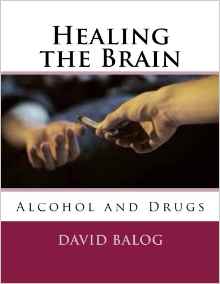The World Health Organization lists migraine -- the condition that produces recurring, severe, often-incapacitating headaches and other debilitating symptoms lasting from a few hours to a few days -- as the third most prevalent illness in the world, behind only tooth decay and tension-type headaches. More than 38 million Americans suffer from migraine, including approximately 28 million women, who are afflicted at a rate three times that of men. The nonprofit Migraine Research Foundation says health care and lost-productivity costs associated with migraine are estimated to be as high as $36 billion annually in this country.
Despite those (and many other) daunting statistics, migraine is still widely misunderstood and frequently undiagnosed. And until quite recently the most commonly prescribed "remedy" for migraine was to lie in a dark room and wait for the pain to pass.
"It used to be that people with migraine were largely ignored and had to sequester themselves off someplace for hours or even days," said Juline Bryson, M.D., a neurologist and headache specialist at Wake Forest Baptist Medical Center. "But people who have migraine don't have to suffer. We have treatments that work, and even better ones are in the pipeline."
The first thing to realize about migraine, Bryson said, is that it's not just a bad headache. Rather, migraine is a complex neurological disorder that is genetic in nature.
"It's a strong hereditary trait," she said. "If one of your parents has migraine, there's a 50 percent chance you will, too. If both parents have it, there's a 75 percent chance."
In people who have this genetic predisposition to migraine the brain is abnormally sensitive to certain stimuli.
"When the brain is irritated it slows everything down, which is why people can't see clearly, feel clumsy, can't think straight, can't speak well, feel nauseous," Bryson explained. "Blood vessels get super-sensitive with increased blood flow, which causes throbbing pain.
"And the trigeminal nerve [the large nerve on both sides of the head that supplies sensations to the head and face and controls the muscles used in biting and chewing] flips out and sends all sorts of pain signals."
Not all migraine attacks are the same -- some, for example, are preceded by visual disturbances called aura -- nor are the triggers that initiate them.
And because migraine doesn't produce a visible sign like a bruise or rash and can't be detected by an X-ray or other imaging technique, doctors have to depend on patients' accounts of their episodes to know exactly what they're dealing with.
"We do rely on what patients tell us," Bryson said. "But people don't have very good recollections of their migraines. Some people think they have more headaches than they actually do, some fewer. So we tell a lot of patients to do a headache diary. When they keep a record of their migraines, when they occur, how bad they are, how often they last, what they did or consumed before they happened, we can get a much better idea of how to proceed."
Some of the factors than can trigger migraines or make them worse are common to most patients. These include fluctuations in estrogen levels in women, a drop in barometric pressure (as when a storm is approaching), anything that causes inflammation (such as a cold or any type of infection) and the overuse of over-the-counter medications and prescription opiates. Physical conditions such as obesity and sleep apnea also can contribute, as can lifestyle choices like smoking, drinking alcohol and eating foods high in preservatives and artificial sweeteners. But by no means does the list stop there.
"I could talk for hours about migraine triggers. There are probably as many triggers as there are patients," Bryson said, adding that some people have no clear triggers.
The prescription medications currently used to prevent migraine were all developed for other purposes. These blood pressure medicines, anti-seizure drugs and antidepressants have proven effective in reducing migraine. There's also onabotulinum toxin type A (Botox), which is approved as a preventive measure for people who have attacks more than 15 days a month. Medicines in a group called triptans can be taken at the onset of migraine attacks to lessen their effects.
"There are some good medications, but not everybody responds to them," Bryson said. "Fortunately, we have a whole new class of medications formulated specifically for migraine that are probably going to be released in the next year or two, which should change the face of migraine treatment strategies as we know them."
Those treatment strategies are not limited to drugs. Bryson and her colleagues in the headache program at Wake Forest Baptist take an integrative approach that can include sleep studies, psychological counseling, relaxation techniques, physical therapy, exercise and lifestyle changes.
Another member of the Wake Forest Baptist team, Rebecca Wells, M.D., is currently conducting a clinical study of stress reduction as a treatment for migraine.
"We don't just give somebody pills and send them on their way," Bryson said. "We look at a variety of factors and try to address them. It's my job to educate patients, to help them learn how to control their headaches, but they have to do their part."
However, no treatment program can totally eliminate migraine.
"Patients can do everything perfectly -- take their meds, lose weight, get enough sleep, stop drinking coffee, whatever -- and still get migraine, because it's genetic," Bryson said. "We'll never completely stop migraine headaches, but we can reduce them so people can be in control of their pain instead of their pain controlling them.
"Even if somebody has only one or two migraines a month, those hours with pain are lost to them, their families, their work, the enjoyment of their lives. Anyone who has migraine should see a doctor as soon as it interferes with their life. Period."










